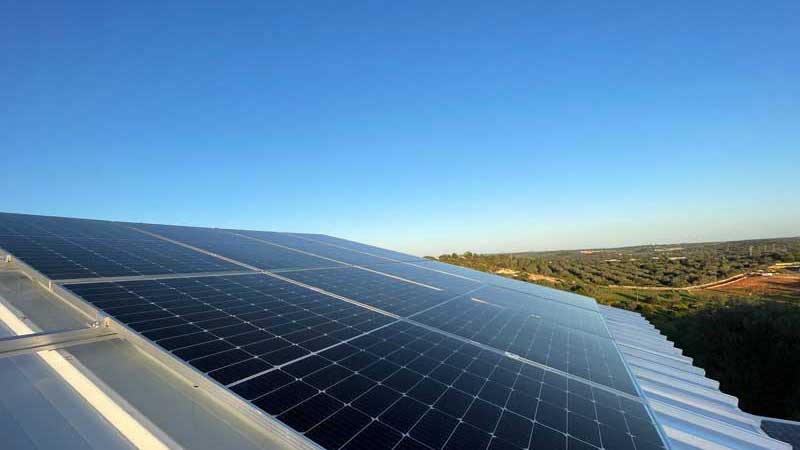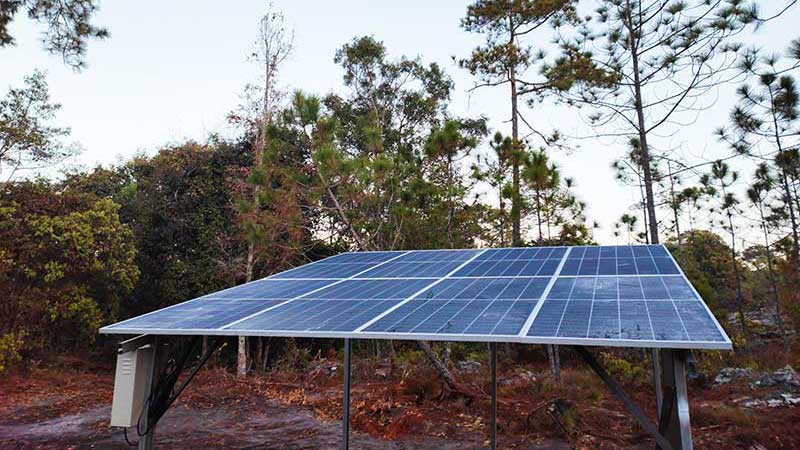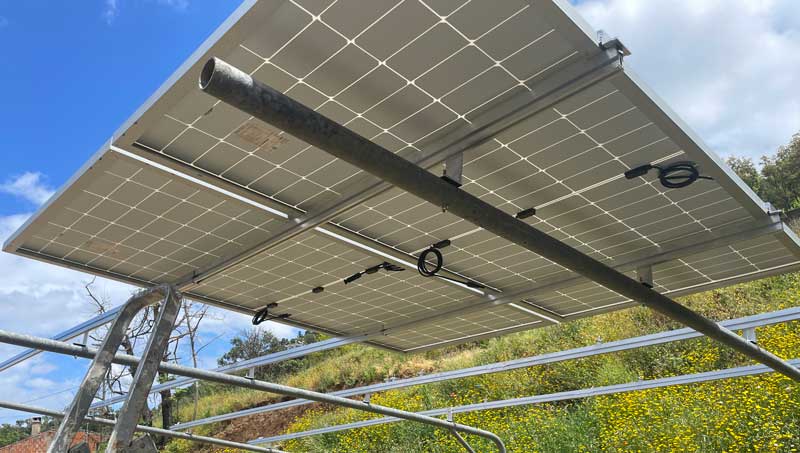Solar panels are made of a relatively thin layer of a semi-conducting material sandwiched between a sheet of glass and a polymer resin. When (PV) photovoltaic materials absorb sunlight the solar energy knocks electrons loose from their atoms, allowing the electrons to flow through the material to produce electricity. Multiple modules can be grouped together and connected to form a photovoltaic array, providing a large amount of electricity.
There are four basic types of PV panel: monocrystalline, polycrystalline (or multicrystalline), hybrid and thin film (or amorphous silicon).
Monocrystalline
These high end solar panels are made of silicon formed into bars and cut into wafers. They have the highest purity of silicon making them efficient, allowing a much larger electricity voltage output than polycrystalline panels.
Polycrystalline
This comparatively cheaper solar panel is made by melting raw silicon together to make wafers – a faster and more cost effective process than monocrystalline panels. They look blue and speckled and contain many crystals in each cell. They’re cheaper but can be less efficient.
Hybrid cells
combine crystalline cells with thin film cells. The nanomaterials used in hybrid solar cells have a lower optical absorption compared with conducting polymers and can absorb a much larger portion of the solar spectrum. In principle, these solar cells have an efficiency limit of 45%.
Amorphous Silicon
These cells are the cheapest but also the least efficient. They’re flexible but rarely used for residential projects.
The economic benefits of a PV system are actually considered to be an investment, where a PV system requires an initial cost to install and requires very little maintenance but will continue to generate electricity.




